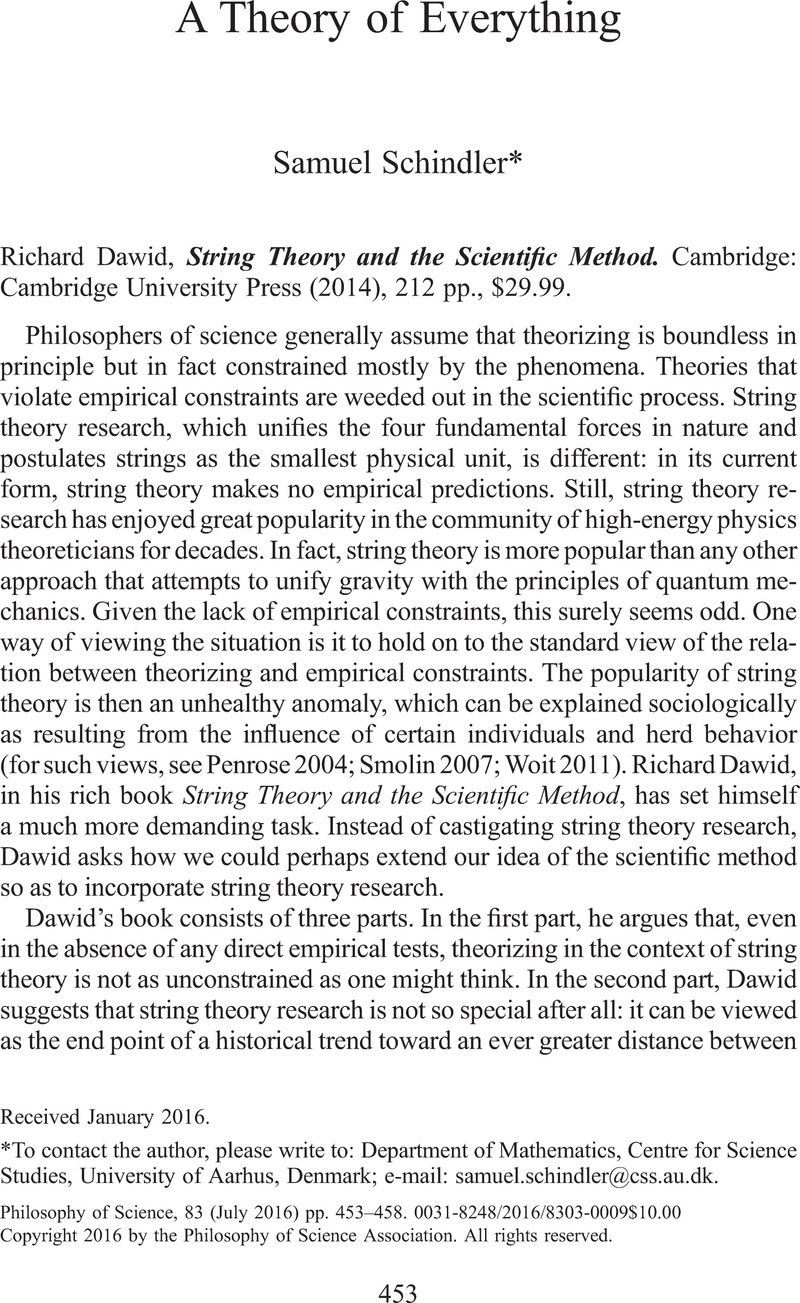No CrossRef data available.
Article contents
A Theory of Everything - Richard Dawid, String Theory and the Scientific Method. Cambridge: Cambridge University Press (2014), 212 pp., $29.99.
Published online by Cambridge University Press: 01 January 2022
Abstract
An abstract is not available for this content so a preview has been provided. Please use the Get access link above for information on how to access this content.

- Type
- Book Review
- Information
- Copyright
- Copyright © The Philosophy of Science Association
References
Castelvecchi, D. 2015. “Feuding Physicists Turn to Philosophy for Help.” Nature 528 (7583): 446–47.CrossRefGoogle Scholar
Dawid, R., Hartmann, S., and Sprenger, J.. 2014. “The No Alternatives Argument.” British Journal for the Philosophy of Science. doi:10.1093/bjps/axt045.CrossRefGoogle Scholar
Forster, M., and Sober, E.. 1994. “How to Tell When Simpler, More Unified, or Less Ad Hoc Theories Will Provide More Accurate Predictions.” British Journal for the Philosophy of Science 45 (1): 1–35.CrossRefGoogle Scholar
Musgrave, A. 1974. “Logical versus Historical Theories of Confirmation.” British Journal for the Philosophy of Science 25:1–23.CrossRefGoogle Scholar
Penrose, R. 2004. The Road to Reality: A Complete Guide to the Laws of the Universe. London: Random House.Google Scholar
Smolin, L. 2007. The Trouble with Physics: The Rise of String Theory, the Fall of a Science, and What Comes Next. Boston: Houghton Mifflin Harcourt.Google Scholar
Stanford, P. K. 2006. Exceeding Our Grasp: Science, History, and the Problem of Unconceived Alternatives. Oxford: Oxford University Press.CrossRefGoogle Scholar
Woit, P. 2011. Not Even Wrong: The Failure of String Theory and the Continuing Challenge to Unify the Laws of Physics. London: Random House.Google Scholar
Worrall, J. 1989. “Fresnel, Poisson and the ‘White Spot’: The Role of Successful Prediction in Theory-Acceptance.” In The Uses of Experiment, ed. Gooding, D., Pinch, T., and Schaffer, S.. Cambridge: Cambridge University Press.Google Scholar
Gooding, D., Pinch, T., and Schaffer, S. 2002. “New Evidence for Old.” In In the Scope of Logic, Methodology and Philosophy of Science, ed. Gardenfors, P.. Dordrecht: Kluwer.Google Scholar




